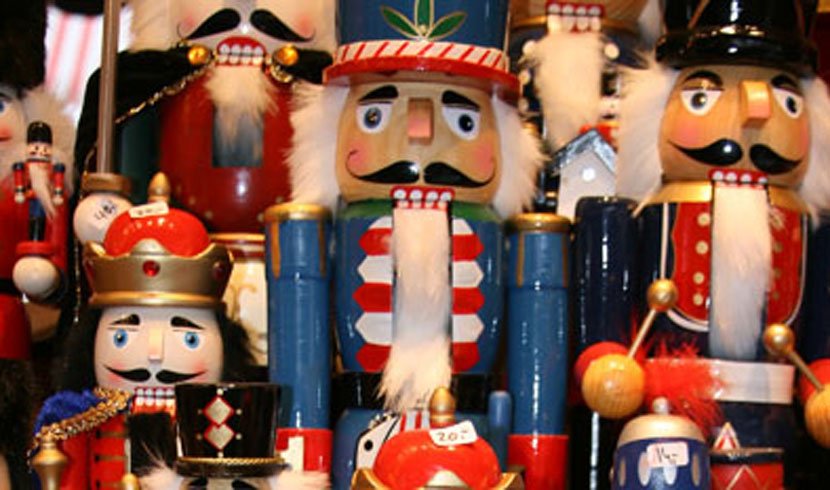
by Petra Lessoing 86th Airlift Wing Public Affairs
All over German Christmas markets, shoppers will find unique wooden items such as nutcrackers, Christmas pyramids, angels and other figures. The origin of these holiday items dates back to the 17th century in the Erzgebirge, a mountain area near the Czech border.
After ore became scarce, many miners were forced to find work elsewhere, so they began turning everyday items into little toy figures for their children, which eventually led to an entire new industry.
The miners created different figures as an artistic expression of their interests and political concerns. One of the first items created was the wooden figure of a miner smoking his pipe, called “Räuchermännchen,” or smoking man.
To express their longing for daylight after working years in the mountain, the miners also produced light angels. With the creation of mean-looking nutcrackers, they intended to insult the magistracy (government).
Former miners also produced wooden policemen, foresters, soldiers and high authorities with scowling faces. This was their way of insulting the government and showing them they were treating the miners unjustly.
In 1699, a wood craftsman from the town of Seiffen, which is located in the Erzgebirge, transported his homemade products on a wheelbarrow to the fair in Leipzig, where commercial relations were established, especially with the town of Nuremberg.
That’s how the manufacturing of these unique toys started.
Since the standard of living was quite low in the Erzgebirge, the products were sold at cheap prices and thus faced little competition.
Eventually, the former ore-mining town of Seiffen turned into the European center of toy production with exports to the U.S. starting in 1784. The most popular item that was exported to the states was “Noah’s ark.” The little animals were made with a special technique — wheel turning. Craftsmen prepared wooden wheels and cut the figures out, a technique still alive today in Seiffen, the town of toys.
At the beginning of the 20th century, the production of miniature toy figures became more popular. By 1890, customs were charged according to weight and not the value of the products in exporting to other countries. This made it more expensive to export big toys. At the same time, wood prices increased.
Nowadays, the Erzgebirge region is well known for traditional Christmas symbols — miners carrying lights, angels, nutcrackers, Nativity scenes, Christmas pyramids and wooden arches.
Mining, longing for light, joy of celebrating Christmas and the love of their children were the predominant reasons for this specific type of toy production.
The Seiffen toy museum in the center of town (Hauptstrassse 73) displays all kinds of wooden toys that were produced throughout the centuries. Opening hours are 10 a.m. to 5 p.m. The museum will close at 1 p.m. Christmas Eve and New Year’s Eve. It will be open 10 a.m. to noon on New Year’s Day. For more information, visit www.spielzeugmuseum-seiffen.de.
